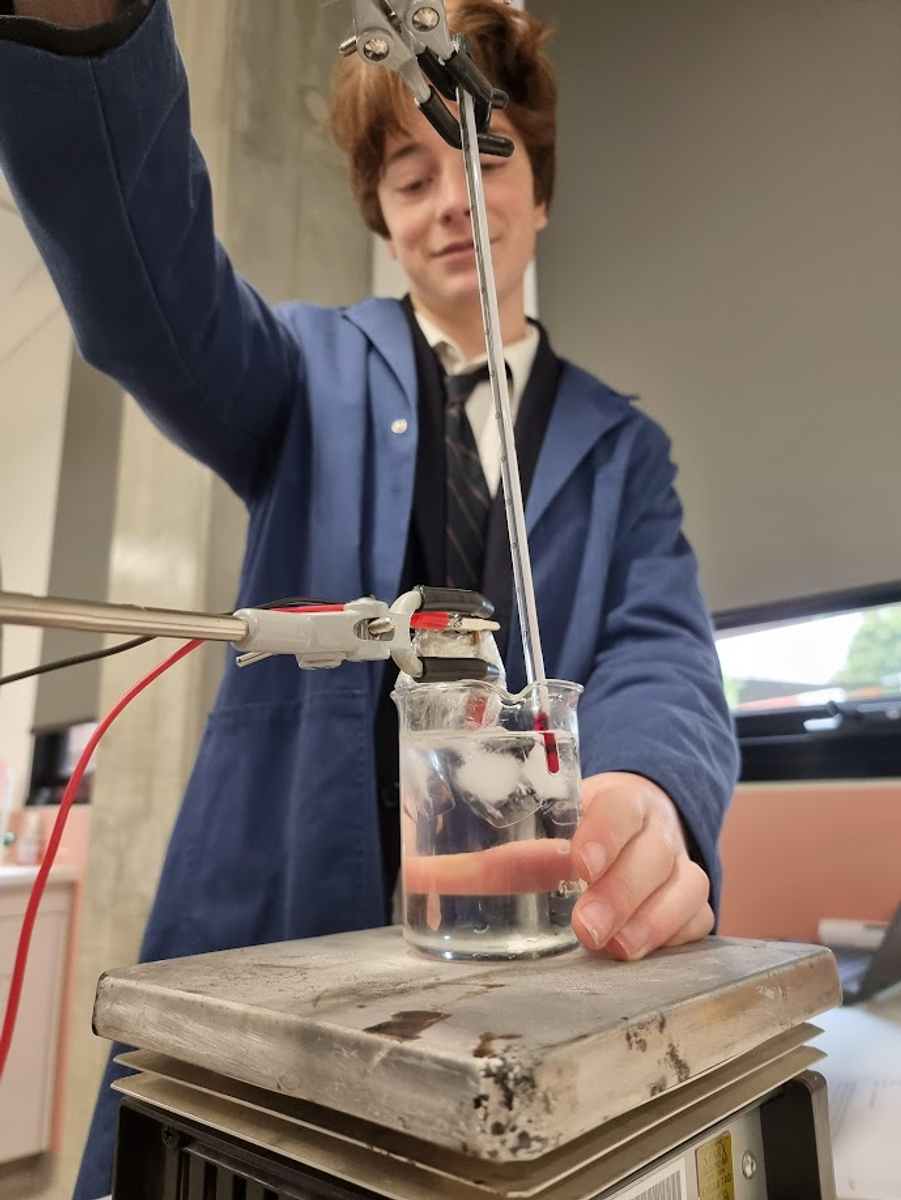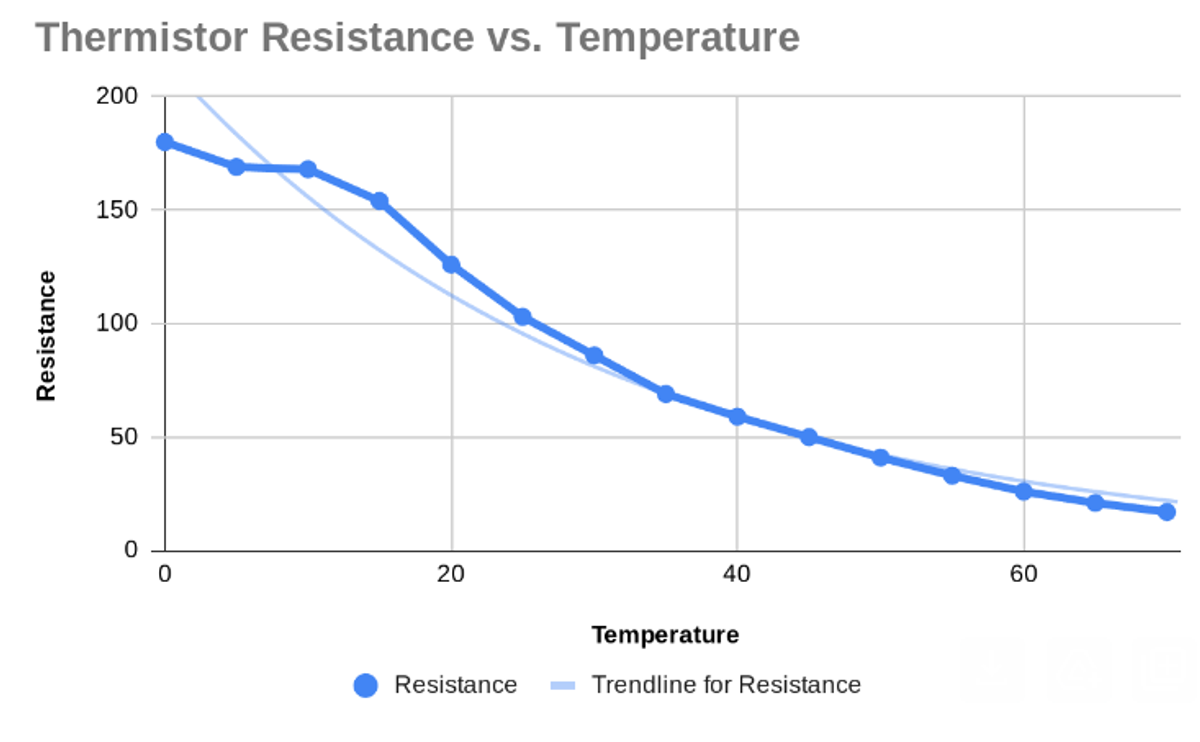SCIENCE

PHYSICS IN ACTION: A THERMAL SENSOR
The Year 11 Physics students have worked on the area of study that covers applying the use of heat and light sensors such as thermistors and light dependent resistors to trigger an output device such as lighting. Part of this course work included understanding function, structure and use of a thermistor.
At the end of this area of study students conducted an investigation.
The aim of this investigation was to analyse the relationship between the resistance of a thermistor, change of temperature and to construct a resistance - versus - temperature characteristic graph for a thermistor. Students used results from the investigation to plot the characteristic curve for the given thermistor and to reflect on what they learned in class.
Svetlana Beliavski
Physics Teacher
During our double period we conducted an experiment to observe the behaviour of thermistors. We worked in groups of 3: one person observing the temperature, another monitoring the total resistance and the last person writing the results. The Task was to review how the temperature of the thermistor affects the amount of resistance. This practical activity was very engaging and that helped us understand the function of a thermistor.
Revarn Govender, Year 11
Indubitably, me, Fonjer, and Henry thoroughly enjoyed conducting the physics experiment, each relishing the thrill of discovery and the challenge of problem-solving. The camaraderie and shared excitement made the experience both intellectually stimulating and incredibly fun.
Bailey Coote, Fonjer Zhang & Henry Yao, Year 11
In our double class, we conducted an engaging experiment that delved into the characteristics of a thermistor and its relationship with temperature. We meticulously set up the apparatus, which involved varying the temperature and observing how the resistance of the thermistor changed in response. By recording these changes, we were able to create a detailed graph illustrating the thermistor's resistance-temperature relationship.
I found the experiment particularly intriguing because it allowed us to apply theoretical knowledge in a practical setting, bridging the gap between concepts and real-world applications. The hands-on aspect of manipulating the equipment and analyzing the data made the learning experience both enjoyable and memorable. If given the chance, I would certainly choose to repeat the experiment. The insights gained were invaluable, and the process of troubleshooting and refining our methods added an extra layer of satisfaction to the exercise. Overall, it was a rewarding experience.
David Victor, Year 11
RESULTS OF STUDENTS’ INVESTIGATION
Annabel Chan, Year 11
Alex Carter, Year 11















